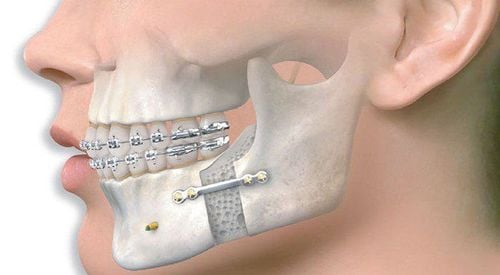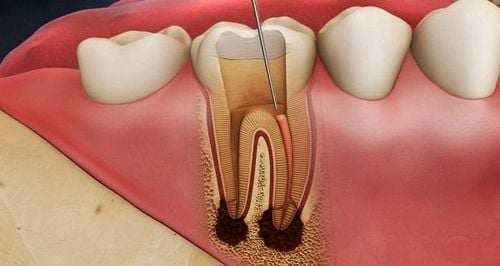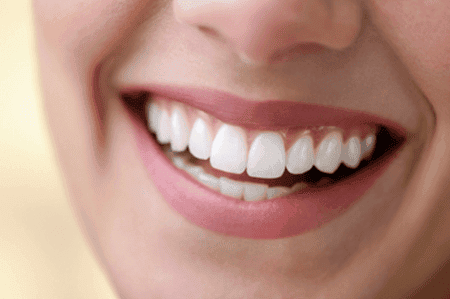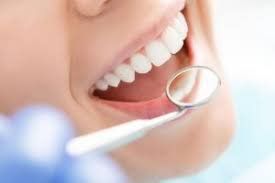This is an automatically translated article.
Article written by MSc Lai Do Quyen - Doctor of Dentistry - Maxillofacial - Facial, Interspecialty Department - Vinmec Times City International General Hospital
Tooth decay into the pulp is a severe progressive caries, spreading to the pulp causing pulpitis. If not treated early, it will cause many complications that seriously affect oral health and the whole body.
1. What is tooth decay in the pulp?
To know more about what is a tooth deep into the pulp, we should learn what parts does a tooth consist of?
A tooth consists of: the crown is the part you see in the mouth and the root is the part in the jawbone that you can't see. The top of each root, where blood vessels and nerves enter the tooth, is called the apical (peduncle) region.
The structure of the crown consists of layers: the outermost layer is enamel with very hard characteristics, the second layer is dentin, which is softer than enamel and in the middle of the tooth is a hollow chamber in both the crown (pulp chamber) and The root of the tooth (pulp), which contains the blood vessels and nerves of each tooth, is called the pulp. The pulp in the crown of the tooth is called the pulp chamber. The pulp at the root of the tooth is called the root pulp. The hard organization of the tooth consists of enamel and dentin.
Tooth decay is a condition in which the hard organization of the tooth is attacked, gradually disappears and creates holes on the tooth surface. If not treated, the hard organization of the tooth will be destroyed more, going down and into the tooth pulp, causing tooth decay into the pulp or called pulpitis. Untreated pulpitis will cause complications affecting oral health and the whole body.
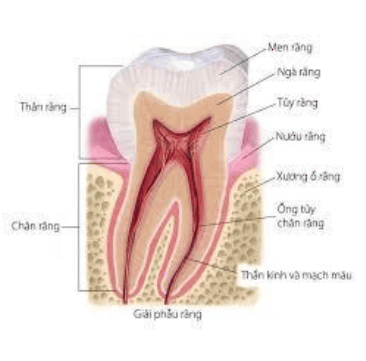
Hình ảnh giải phẫu răng
2. Signs of tooth decay in the pulp and complications caused by it
In the early stages: you find that the tooth sensitivity lasts longer when eating hot and cold foods, when breathing in the wind or when there is a change in pressure. Occasionally, you may find your teeth ache with fleeting attacks. You try to avoid chewing on the side with sensitive teeth. At this stage, you can skip it. In the next stage: your teeth hurt more. The pain can be dull in an area, lasting all day, or it can be severe, spreading to the top of the head. Pain a lot at night. Pain relievers do not help or give little relief. The pain is so intense that it spreads over an area so you can't pinpoint which tooth is hurting. A lot of pain in the teeth makes you lose sleep, can't eat and chew, greatly affecting eating, living and working. In the later stages: if the tooth with pulpitis is not treated, you will not see the tooth pain anymore because the pulp is already dead. Bad breath due to food stuck in the wormhole. Gingivitis around the tooth decay and the surrounding teeth caused by you not chewing to the side of the tooth causes you pain. After a while, your teeth can be broken, broken because the decay continues to develop, causing loss of many hard tissues of the tooth. You see a white nodule in the gums, a pus or pus discharge in the gum area across the root, the tooth is loose, and the face is swollen. You may or may not have a toothache at this point.
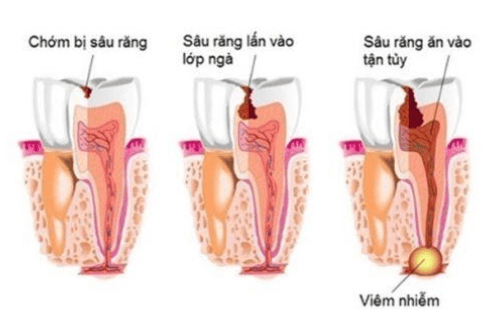
Khi răng sâu vào tủy, dấu hiệu điển hình là răng đau
3. Complications of tooth decay into the pulp
In the deep cavity of the tooth, there are many food debris deposited, which combine with pathogenic bacteria to form an inflammatory foci. When the tooth decay reaches the pulp, it will create an inflammatory reaction in the tooth pulp that causes pain. The inflammatory reaction of the pulp occurs in both the pulp chamber and the root pulp, making the pain even more intense.
Gums around the teeth are painful, swollen, and inflamed, causing bad breath.
Widespread tooth decay causing crown breakage. At this point, the teeth can no longer take on the function of chewing. The broken crown spreads to the root of the tooth, making it impossible for the tooth to be retained. If the inflamed pulp tissue is not removed immediately, the inflammation will go deep down the root, to the apex (peduncle) of the tooth, causing inflammation in the apical region.
Inflammation in the apical area will form a collection of pus in the apical area, causing facial swelling, pain, tooth mobility, apical abscess. Sometimes teeth have to be extracted. Inflammation of the apex for a long time, the infection will spread to affect the surrounding teeth. Depending on how far the infection has spread, the adjacent teeth can be treated to keep or have to be extracted, causing many teeth to be lost.
The fovea of infection from the tooth apex spreads, causing osteomyelitis, spreading to the soft tissues and adjacent tissues, creating an infection that is difficult to control.
The infection spread, creating large cysts that destroy the jaw bone, causing the jaw bone to break, damage nerves, blood vessels,...
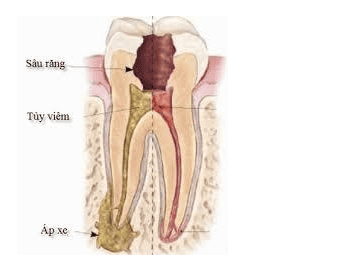
Các biến chứng của răng sâu vào tủy
4. Is tooth decay in the pulp dangerous?
Tooth decay in the pulp is a rather serious disease that can lead to very worrying consequences. When the tooth decay into the pulp, if not treated early, it will quickly lead to the following problems:
Cavities create cavities along with broken and chipped teeth, forming places to store food, causing bad breath. On the other hand, when a tooth is broken or chipped, the gums in between the teeth are easy to crawl into and fill the cavity. This part of the gums is easy to swell, easy to bleed due to rubbing when chewing, causing inflammation and also the cause of bad breath. Inflammation of the tooth pulp leads to inflammation of the gums, apical abscesses, causing extremely uncomfortable pain, even swelling of the face for many days, greatly affecting oral health, overall health and work. Tooth decay into the pulp gradually kills the pulp, destroys the entire crown and root, and causes permanent tooth loss. If the tooth decays into the pulp, if not treated, in addition to the loss of the decayed tooth, it also leads to decay and inflammation in the adjacent teeth. If the tooth decay into the pulp is not treated immediately, the infection goes deep down the tooth apex and spreads to neighboring organizations, causing many serious complications, seriously affecting chewing function and aesthetics. dead. From inflammation of the pulp leads to inflammation of the jawbone. Infection of the apex forms a root cyst. With large cysts in the jawbone, it will destroy a lot of bone tissue, the treatment is extremely complicated and leaves many severe sequelae, even unable to restore chewing function, cannot be recreated. aesthetic pain as well as seriously affect the quality of life. The foci of inflammation in the jawbone caused by complications of tooth decay into the pulp will create favorable conditions for bacteria to circulate in patients with cardiovascular disease, diabetes,... This makes the condition worse. the disease progresses more seriously, difficult to control Not only brings serious pathological consequences, tooth decay into the pulp also makes you eat poorly, reduce physical and mental health.
5. Teeth deeply into the pulp, how are the complications of tooth decay into the pulp treated?
When a tooth is diagnosed with a cavity in the pulp or there are complications due to a tooth decay in the pulp, depending on the current condition of the tooth and the complications caused by the tooth, the dentist will have different treatment plans. Specifically, the treatments are:
Root canal treatment: is a common treatment.
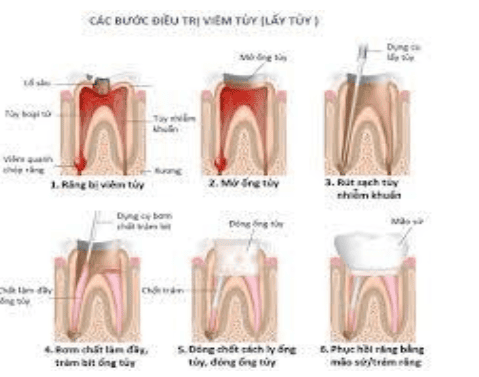
Các bước điều trị viêm tủy
The dentist will anesthetize you so that you do not feel pain when opening the pulp chamber, removing the infected pulp in the pulp chamber and the canals. The canals are cleaned by irrigating and shaping to facilitate irrigation and obturation. The canals after being cleaned and shaped will be filled with root canal filling materials. The upper part of the crown is welded and reshaped. The final step is a crown made to protect the tooth and restore chewing function and aesthetics.
Root canal treatment: in some cases, after root canal treatment, the infection of the tooth apex still occurs or does not go away, then the dentist will have to repair the pulp again. The procedure for re-rooting is similar to root canal treatment, but with a slight difference that the dentist will have to remove all the sealant in the canal before the canals are cleaned again and the sealant is placed back into the canals. Cut the stem (tip) of the tooth:
Anesthesia is administered before the procedure so you don't feel any pain. The dentist will make an incision in the gums, removing the bone to reveal the infected tooth tip. The infection and the root part of the tooth located in the inflammation will be completely removed. The canal at the root of the remaining tooth is sealed with filling material. Depending on the case, the hole in the bone will be filled with artificial bone. Finally, the incision mucosa is sutured closed.
You will be advised by your dentist about care and follow-up after the procedure.
Tooth extraction:
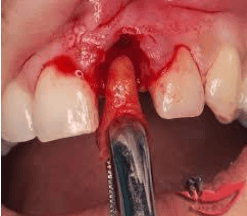
Nhổ răng
Of course, the dentist must give you anesthesia to make sure you are completely pain-free and comfortable during the extraction. Teeth are removed with appropriate instruments. The fovea of infection in the apical region was also removed. Before you go home, the area where the tooth has just been extracted will have to make sure that there is no bleeding. You will be prescribed medication by your dentist and instructed on how to care for the tooth after the extraction. Making dentures to replace the tooth that has just been extracted will also be discussed with you by your dentist.
Mandibular cyst removal or jaw bone cutting, bone grafting are surgeries that must be performed when the jaw bone has lost many tissues due to infected root cysts.
6. How to prevent tooth decay into the pulp
The first thing is that you must keep your oral hygiene clean: brush and floss properly to remove all food debris on the tooth surface that causes tooth decay.
Diet is also very important: eat right meals, limit snacking, eat sweets, sour foods, avoid hard foods. A balanced, nutritious diet.
When you see a tooth with a hole or a tooth hurts, you should go to the dentist immediately, do not delay.
Treatment should not be delayed or abandoned for any reason. You can talk to your dentist about a specific treatment plan to come up with the best solution for you.
It is best that you actively book an appointment for regular dental check-ups every 6 months, do not wait until toothache to go to the doctor. With regular dental check-ups with a fixed dentist, each of your teeth will be meticulously and thoroughly monitored and treated early, in time to avoid unnecessary complications.
Vinmec International General Hospital is one of the hospitals that not only ensures professional quality with a team of leading medical doctors, modern equipment and technology, but also stands out for its examination and consultation services. comprehensive and professional medical consultation and treatment; civilized, polite, safe and sterile medical examination and treatment space.
Customers can directly go to Vinmec Health system nationwide to visit or contact the hotline here for support.





